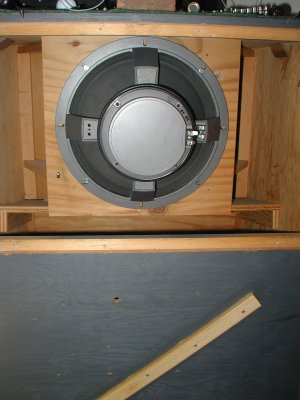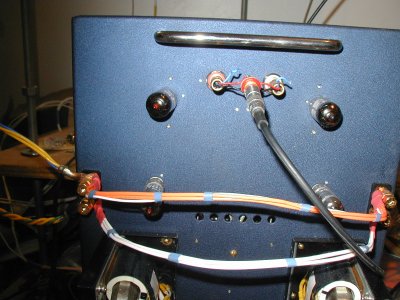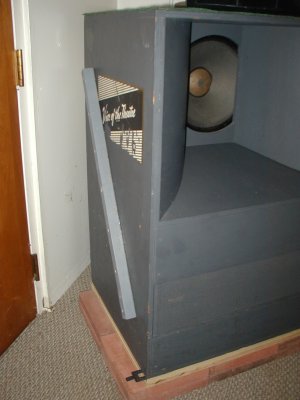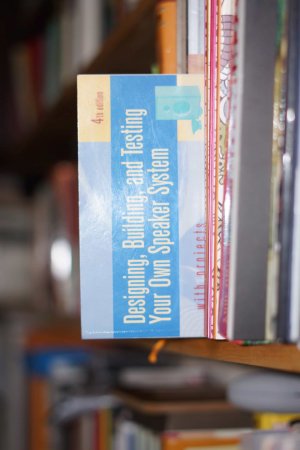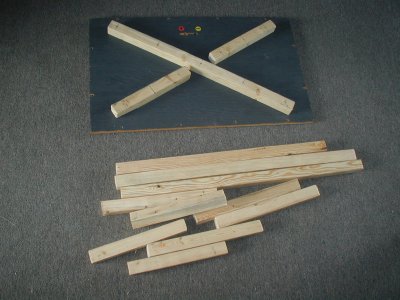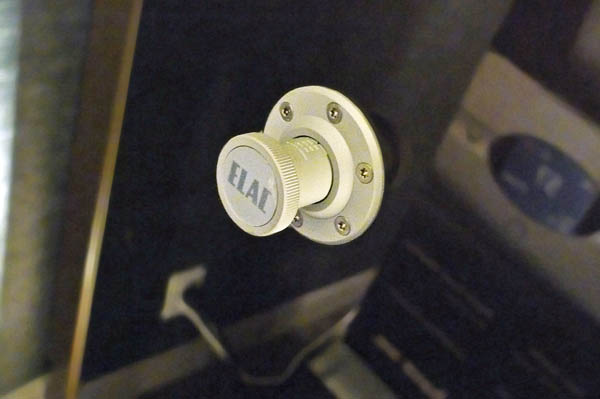Dynamic contrasting is obtained ( and usually lost ) in several ways.
First, the audio amplifier itself must be designed with preserving dynamics, with each and every aspect of it's layout, parts choices, and in it's topological design. As soon as the original source signal's
dynamics gets " lost "
inside the amplifier, it does not mean a thing, as to what ANY speaker is doing, or capable of doing, does it? No, not if the originally recorded dynamics... first ......... got LOST
inside that tube audio amp.
Of course, one MUST choose the best way to
preserve these pointed-out-earlier
10Xs dynamics. We do this, by selecting the most appropriate amplifier and speaker to own.
So MY first concern since about 1980 is : one must build an audio amp to be able to preserve dynamics,
every way possible, while powering your intelligently-chosen speaker. The absolute best answer I have found, after half a century plus of audiophiling, was summarized earlier today, here :
I am newly active here. After doing a brief survey, I thought I might create short series of posts around some issues that are widely discussed but seldom addressed from the pov of the learner. I am what you might call an advanced learner. So bear with me for stating the obvious. I am curious to...

www.hifivision.com
The amp gets designed with the speaker in mind. Given siddharthas'
ten times examples, the BEST known transducer for preserving dynamic playback is a front horn loaded compression driver. It is exactly what you have, in an ALTEC A7-8, ... and for both drivers !!!
I should also note, in the case of ALTEC, besides BOTH compression and FRONT horn loading of the A7's 15 inch ( or 16 inch ) woofer occurs down to about 150 hZ, , ALTEC historically relies upon a bass reflex woofer loading, from 150 hZ down to about 50 hZ.
The front horn loaded compression woofer, IF optimized few are , is wonderful to re-produce split second play -back dynamics, and
a scary and true sense of dynamic realism, VS 98% of all other speaker implementations available. I want to hear that !!!
Six days ago, I changed my woofer driver, from the vintage ( fabled ?? ) 515B, to a circa 1995 ALTEC 515G-8HP. This newly installed woofer replacement driver is conservatively rated as 104.5 dB / 1 Watt / 1 meter. How many woofers are so-rated in audio?? What happens when it fires into an A7-'s short FRONT horn ? It took me three
full exhausting days of work this past week, to finally optimize the new driver to my liking. But now I am delighted. Drum solos, closely miked, are breath-taking and marvelously exciting for me to hear, as is the diction on Gilbert and Sullivan spoken ( sung ) English language words. The G and S sung words ending in "S "es and in " T "s ,
are finally totally, faithfully, and clearly reproduced. What a joy to experience.
Notice, while likely everyone in this thread will likely discuss in
theory terms, I am describing to you my best, most recent,
actual, practical, and an affordable answer to high fidelity in one's home.
Watch this, Herb infrers, ONLY maybe one or two such speakers exist, "
TWO WAYS" !! :
OK, I have covered briefly the best speaker type, ( high efficiency front loaded horn, ALTEC ) in terms of dynamics, and I do know I am right on-topic.
What about the other two OBVIOUSLY needed components that proceed this thoughtfully chosen speaker ( to become outright exciting to hear ) ???????. Two components immediately come to mind, the amplifier, and the speaker wires.
The best speaker wiring myself, and about a dozen people with true High End High Efficiency horn speakers use, has been recently determined ( in every instance thus far !!! ) to be the TRIO DIY wiring as per my recent HFV thread. All details are right here in HFV ( search words........... m22759 ).
Amps, in relationship to preserving
ON TIME dynamics, is the other component. This opens up a
total can of WORMS.
I have unjustly been thrown off of two or three Forums in the USA for my critique of amplifiers. The amp owners get mad at me ( and NOT their turkey audio amplifier ) and rebel against me. When they have spent lots of money on their amp, they get mad when I say it is a turkey, inadequate, a piece of garbage .

But guess what, this is how I have felt about most audio amplifiers since about 1978, starting with my first Audio Mentor, the speaker Manufacturer, Robert W. Fulton. Yes, in reference to dynamics, tube amps stink !!! There is only ONE manufacturer, in the entire world, capable of building a satisfactory - to - me tube audio amplifier in 2022. This is my second Audio Mentor, Dennis Fraker, who today - less-actively after Covid runs a company ( on his terms !! ) called Serious Stereo. Read on-line a 2005 RMAF Denver USA audio show review.
So what is wrong with everyone's tube amp, except what Dennis and I will build ? Among other things, it uses a power supply, taught to E.E.s in school, that NEVER EVER cuts the mustard in terms of Dynamics.
In 2005 to 2007, I introduced the concepts of our new supply, short-named 'LSES" for " low stored energy supply" to " Audio Asylum " Members in the USA. Most E.E. types rebelled, ( although two graduate E.Es, sharp guys, built, listened, and loved it , URLS available upon request ). I eventually got banned from A.A. Perhaps this occurred a result of some A.A. Members ( 98% had never even
heard this power supply topology ) complaining to Moderators, after getting mad.
I divulge this herein, in hopes of a more informed and even-response from most of you HFV FMs and Moderators !!! I KNOW it is fair for me to say, that 98% of all existing tube amps in this world,
IMHO, can not be dynamically correct ( VS LSES ) because of their use of a text-book conventional design.
In my apartment's modest-sized living room, I am listening to my SN#1 stereo 6005 amp ( channels connected in parallel - maybe 5 Watts ) driving a single A7-8 VOTT speaker. It uses the newer driver I installed - this 1995 ALTEC 515G-8HP earlier in the week. Yes, I would LOVE it if siddharthdas were able to hear both my drum solos and Gilbert and Sullivan CDs played back, how
exciting and dynamic, and on time, to experience !!
One other supporting piece of evidence. This is dated 12-2022, and not 2005, is the only other stereo LSES 6005 amp in existence that I personally built, SN #2, running now for about a month in Hong Kong. Belonging to an highly audio-experienced, quite nice audiophile :
the best sounding amps in THIS world are NOT ever made by EEs and pHDs particularly, but by JUST a few people world-wide, who LISTEN and build, and have a passion for it all. Never forget that !! An absolutely forgettable and a totally unnecessary comment and most importantly a classic example...

www.hifivision.com
It is about time, people in audio
got to use and enjoy the heck out of better-designed tube amps !!! Amps that actually can do dynamics, ( subject of this theory - thread. ) I will have to finish the " TRIPLE 6005 " amp design and it's thread, finances permitting sometimes in 2023. It is posted up here, thanks to HFV.
Best wishes to all !!
Jeff Medwin
 . Else you’ll have unmanaged compression + lousy distorted sound. Corollary for high res recordings - high resolution sound brings nothing more to the table unless combined with mastering that preserves dynamic range. And when you have such a master, you need a system that can play it back
. Else you’ll have unmanaged compression + lousy distorted sound. Corollary for high res recordings - high resolution sound brings nothing more to the table unless combined with mastering that preserves dynamic range. And when you have such a master, you need a system that can play it back  faithfully
faithfully


